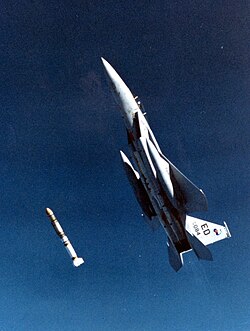
Anti-satellite weapons (ASATs) are space weapons designed to destroy satellites for strategic military purposes. Currently, only the USA, the former USSR and the People's Republic of China are known to have developed these weapons, with India claiming the technical capability to develop such weapons. On January 11, 2007, China destroyed an old orbiting weather satellite, the world's first test since the 1980s.

USA-193 was an American spy satellite, which was launched on 14 December 2006 by a Delta II rocket, from Vandenberg Air Force Base. It was reported about a month after launch that the satellite had failed. In January 2008, it was reported that the satellite was decaying from orbit at a rate of 1,640 feet (500 m) per day. On 14 February 2008, it was reported that the US Navy had been instructed to fire an SM-3 ABM weapon at it, to act as an anti-satellite weapon.
This mission is different from "normal" ASAT operations in that the target vehicle is at a much lower altitude than would normally be the case. However, some analysts believes this is a coincidental, convenient reason for a passive response to the Chinese ASAT test carried out on January 11, 2007.
According to news media, the primary reason for destroying the satellite is the large amount of the highly toxic fuel hydrazine contained on board, which could pose environmental and health risks should any significant amount survive the reentry.
On Febuary 20, 2008, it was announced that the launch was carried out successfully and an explosion was observed consistent with the destruction of the hydrazine fuel tank.
Hiç yorum yok:
Yorum Gönder